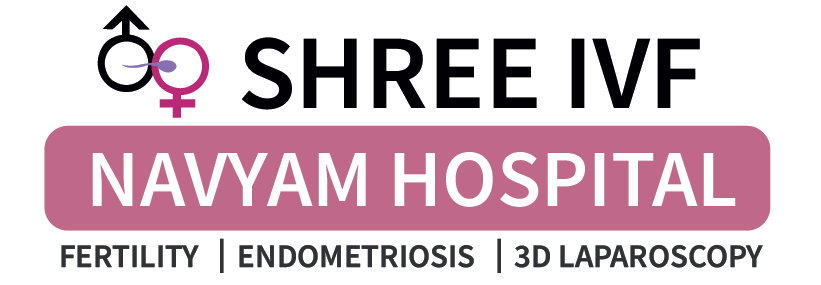
- Bringing a new life into the world is an exciting and emotional journey. Natural pregnancy, where a baby is conceived without medical assistance, is something many couples dream of.
- But sometimes, understanding how this miracle happens can seem complicated. Let’s break it down step-by-step with simple examples and analogies so that even a 5th grader can understand.
What is Natural Pregnancy?
Natural pregnancy happens when a sperm cell from the father meets an egg from the mother, and together they form a baby. It’s like planting a seed in the soil (egg) and watering it (sperm), which helps it grow into a plant (baby). This whole process takes place inside the mother’s body.
The Journey of the Sperm and the Egg
Let’s imagine a race—a marathon. In this race, the father provides millions of tiny runners, called sperm cells, and the mother has one special spot at the finish line, the egg. These sperm cells race through a long, narrow road (the fallopian tube) to reach the egg.
Only one sperm gets to win this race and meet the egg. Once the sperm reaches the egg, they join together, and a new life begins to form. This is called fertilization.
Example: Think of it like a video game where the sperm are the characters trying to reach the next level, and the egg is the goal they need to reach to unlock a new mission (growing into a baby).
How Does the Egg Know When to Be Ready?
Every month, the mother’s body prepares for the possibility of a pregnancy. One of her ovaries releases an egg, and this is called ovulation. The egg waits in the fallopian tube for the sperm to arrive.
This process happens naturally, just like how flowers bloom in spring when the weather is right. The egg is available for fertilization for about 24 hours.
Analogy: Imagine the egg as a special guest at a party. The party only lasts for one day, and during this time, the guest (egg) waits for the right friend (sperm) to show up.
What Happens After Fertilization?
After the sperm and egg meet, they form a zygote, which is like the tiniest version of a baby. This zygote starts dividing and growing. It travels to the uterus, where it will stick to the wall of the mother’s uterus. This is called implantation. Think of it like a seed finding good soil where it can plant its roots and grow into a tree.
Once the zygote implants itself, it continues growing and developing into a fetus, and after about 9 months, a baby is born!
How Can You Increase Your Chances of Natural Pregnancy?
Some couples might try for a baby for a long time before they succeed. It’s important to understand that this is normal, and it doesn’t mean something is wrong. Here are a few tips to help the process:
- Healthy Lifestyle: Eating nutritious food, exercising, and avoiding smoking or alcohol is important because it’s like taking care of the soil before planting a seed. Healthy soil grows better plants, and a healthy body creates the best environment for a baby.
- Understanding Ovulation: Knowing when the mother is ovulating is key. You can track ovulation using calendars or special kits that tell you when the egg is ready. It’s like setting up the party and knowing exactly when the guest of honor (the egg) will arrive.
- Timing Intercourse: Having regular intercourse, especially during ovulation, increases the chances of the sperm meeting the egg. Think of it like watering a plant regularly; the more you water it at the right time, the better the chances of it growing.
Challenges in Natural Pregnancy
For some couples, conceiving naturally might take time, and this can feel frustrating. It’s important to be patient and kind to yourselves. If it doesn’t happen right away, it’s okay. It doesn’t mean something is wrong with you. Just like plants need time to grow, sometimes our bodies need time, too.
Analogy: Think of it like baking a cake. Even if you follow the recipe exactly, sometimes it takes a little longer to bake. That doesn’t mean the cake won’t turn out great—it just needs a bit more time in the oven.
When to Seek Help
If after trying for a year you’re still having trouble getting pregnant, it’s a good idea to talk to a doctor. This doesn’t mean you’ve failed. Sometimes, there might be small obstacles, like low sperm count or issues with ovulation, that a doctor can help with. It’s like calling a gardener to help you figure out why your plant isn’t growing as fast as it should.
Doctors might suggest treatments or lifestyle changes that can make the process easier. The important thing is that you’re not alone, and there are many ways to help couples who want to have a baby.
The Emotional Side of Trying for a Baby
The journey to natural pregnancy can be filled with emotions—excitement, hope, frustration, and sometimes sadness. It’s completely normal to feel this way. Each couple’s journey is different, and some may get pregnant quickly, while others may take longer. It’s important to support each other during this time.
Example: Think of it like learning a new sport. Some people might get good at it right away, while others need more practice. But in the end, with patience and persistence, everyone can improve and reach their goals.
Conclusion: A Journey of Hope and Patience
Natural pregnancy is a beautiful, natural process that sometimes takes time and patience. It’s about giving your body the best chance to do what it’s designed to do. While the road might have its ups and downs, remember that you’re not alone in this journey. Many couples face challenges, but with love, support, and sometimes a little help from doctors, the dream of holding your baby in your arms can become a reality.
Always take care of your body and your heart during this process, and don’t hesitate to reach out for help if you need it. Every couple’s journey to parenthood is unique, and there’s no right or wrong way to feel or experience it.
Final Analogy: Think of the journey to pregnancy as planting a garden. Some flowers bloom quickly, while others take more time. But with the right care, patience, and attention, every garden has the potential to blossom beautifully.
If you have questions or concerns about natural pregnancy, talking to a healthcare provider can offer guidance and reassurance.


